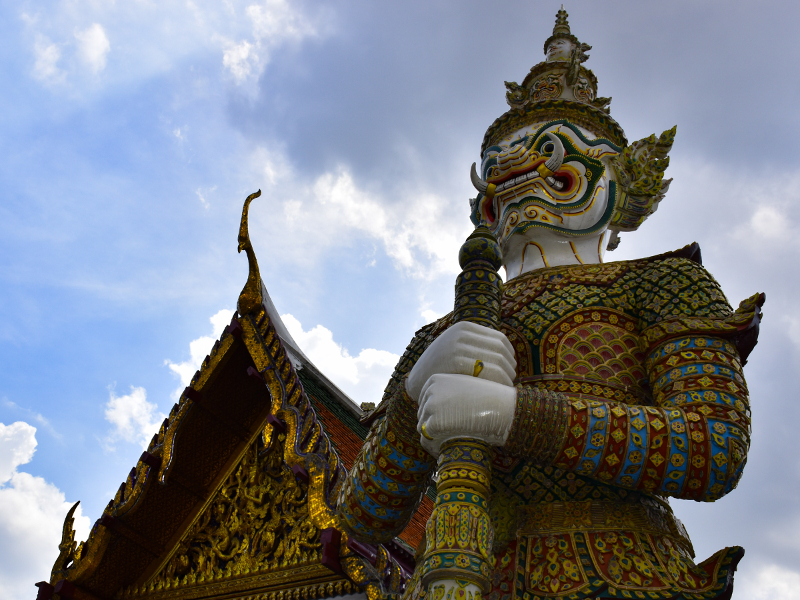By Sarabjeet Dhody Natesan
Much has been written about the virus and therefore, I will stay away from it. I will focus on the implications of the disaster in a country as heterogeneous as ours.
While one can debate the need for such a strict lockdown and the necessity of the tough decision to extend it, a recapitulation of India’s Covid-19 response is pertinent. The first positive Covid -19 case in India was detected on the 31st of Jan. Fully cognizant of the acute health stress it had created in our neighbourhood (China) by then, the government did not give it the urgency it deserved. Even a tweet on the 5th of February, by a senior leader of the Indian National Congress, Rahul Gandhi, was ridiculed and not heeded. From holding elections, lighting the fires of communal riots, holding the Budget session of the Parliament, felicitating a foreign dignitary and holding an election rally for him in a populous state, Gujarat, to dismantling an elected government and installing a new cobbled-up alternative in Madhya Pradesh, the government displayed an indifference to the situation that defied logic.
A few state governments jumpstarted their response to the virus and minimized the loss of life to a certain extent. The state governments’ response of locking down reflected their heightened sense of urgency and responsibility towards the residents and perhaps this finally galvanized the government into announcing a ‘Janta Curfew’ on the 22nd of March, 2020. The country was also given instructions to come to their balconies and clap to show their support for the medical and health workers; ‘warriors’ as they were euphemistically described. Well, the nation clapped and beat plates and raised a storm and broke all social distancing norms, and did everything possible to endanger themselves. The Janta Curfew became a 21-day countrywide lockdown from the 24th of March, announced once again at 8 pm and once again keeping with the new power tradition, to be effective from midnight.
The window to plan and organize for 21 days was only four hours. What was the need for this announcement to be made at 8 PM one will never understand. But in the ensuing hours of the 24th people ran helter-skelter, bought medicines, food, water, displaying a frenzy that made it seem as if an apocalypse was at hand. Care, caution, social distancing norms were all forgotten.
By the evening of the 27th March, all these things were pushed to the back burner and the severity of the unfolding crisis became starkly visible to the people who would be affected most by it, the poor, the local labour, the daily wage earner, people stranded away from a notion of home, the marginalized migrant labour.
The government trying to ease the immediate effects of a stringent lockdown put together a package for the suddenly unemployed labour. The FM announced a package to compensate for three months of hardship suffered due to the sudden lockdown, lost jobs, and time to regain employment. The government was to give to the labour, upon the furnishing of proper documents, a princely sum of Rs 1500 for three months, 5 kg cereal (wheat or rice) and I kg daal per month, and last and not least three cylinders, limited to one a month.
The ill-advised package released by Mrs. Sitharaman did not pacify or calm the poor and the suddenly unemployed daily wage earners; its inadequacy almost taunted them when house owners fearing non-payments of rent because of lack of contractual agreements that benefited them thus far, asked the poor to vacate their shanties. Local shopkeepers refused to provide food on credit and worse, price gouging on essentials started from the very first day. Unceremoniously thrown out of their jobs, with little to no savings to bank upon, the daily wage earner faced an uncertain future.
From 27th March evening, the homeless, perhaps realizing the inadequacy of the monthly sum of Rs 500 promised by the FM, and the hollow ring of three gas cylinders with no rations to burn the kitchen fires, must have decided it was pointless to remain in the metropolis they were currently locked up in. The alternative was an arduous walk covering unimaginable distances to reach home, winging it on a prayer and a bicycle. The promised monthly rations of 5kg grain and 1 kg extra pulses, perhaps aiding the decision to walk.
The movement of migrant labour is not a new phenomenon, but their sudden misfortune was. It is well known that in between the two major cropping seasons of India, landed and landless rural men and women come to urban areas to supplement the meagre agricultural income. No one pays them to stand and watch the crops grow. This mass movement is also important as the migrants, almost 90% of the informal sector, keep India’s economic engine running as labour for micro and small businesses, construction sector, home security, loaders, logistics and the complex supply chains; the countless people who provide their services for all the petty work that you need to get done. The labour is also needed for the harvesting seasons and thus, bi-annually they make the trip back to villages. At great personal cost, they help meet the demand for urban informal labour.
Till the government stepped in to remove it, our television screens and social media feeds were full of heart-breaking visuals of the migrants walking home. Sitting in the cool comfort of our home in the hot and crushing Indian summer, we saw men, women, old, young, sick, infirm, walking distances ranging from 200 to 1500 kilometres. Some died of hunger, some of thirst, some died in accidents and some died on train tracks that they were walking on to reach home, following railway tracks being the best way to not lose their way. Crushed to death; their physical and mental fatigue lulled them into a deep sleep, so deep that they didn’t hear the approaching trains. Many pooled their life savings of a few thousands and booked vans and omnibuses to travel home. The options were limited, either stay back and live off their savings or leave for home using the savings. With worrying news of the virus and increasing trends of global deaths crisscrossing the world, it became apparent that there can be no fixed date as to when the lockdown will be lifted. Worried about their future more migrant labour started walking and the kafila continued unabated.
Hungry, tired, sick, broke, they walked with the stoicism usually reserved for penitents.
And, they didn’t blame anyone, they walked, very matter of fact, they were angry, they cursed their luck and the virus but not the government. For what can Modi do when big countries like America have not been able to control the virus?
Seeing the non-response of an apathetic state, ordinary people, NGOs, and many philanthropic organizations stepped in. People donated, small vans were arranged, langars were opened at many places, food and water were provided. Where the government failed, civil society helped.
The government’s initial response was to erect barricades, to set the local state police on the tired travellers, to stop them, to spray them with insecticide, and to send them back to the place they were trying to leave. The larger reasoning – not the welfare of the migrants but the realization that without labour the economy cannot be opened up. And after having undergone so much stress, labour may choose not to return to the towns and cities. The train services were restarted after a hue and cry was raised by the opposition and the public. The government charged the poor, hungry, fatigued, and out of work migrants’ fares that they could hardly afford to pay. This again was withdrawn after the civil society and the opposition parties raised a hue and cry. Every response was thoughtless and seemed to add insult to injury; trains travelling on tracks with pre-set routes managed to lose their way and took the hapless and helpless passengers elsewhere, on journeys they never intended to make. People dying in trains and on railway platforms this time.
To make the situation even more unpardonable, the state also accumulated formidable power during the period of total lockdown and has chosen to hide behind it since. Legislations were pushed through as ordinances, the judiciary helped by endorsing laws on political expediency rather than jurisprudence, the state practiced economic policies of exclusion, and pushed crony capitalism’s ever-increasing authoritative and monopolistic strides. Aided by a pliable media the government strutted around on its lofty perch, insulating itself from uncomfortable questions.
This power has seen the government default on two major issues, the first, the mismanagement of the migrants’ issue. The second, lack of integrity surrounding the fund that the PM started, PM CARES. Created bypassing the existing PM National Relief Fund. The government did not explain the need to create a new fund when an existing one has managed far worse situations. No information is available to the public and none is shared too. It hides behind a veil of secrecy and obfuscation. Details about donations to and pay-outs from PM CARES are not shared with the public, the very public which provided funds for it. RTI petitions are returned unanswered. PM CARES lives in the netherworld, unavailable and impenetrable.
The economy was in a financial and social mess when the lockdown was lifted. Three and a half months of total shutdown. A singular event like this is perhaps unparalleled and the challenges and opportunities it presented to the world to stand as one will not be forthcoming for a long time to come. The entire world, afflicted by a virus that discriminated against no one based on race, colour, religion, and gender. The sinking world could have united behind a single plan to buoy itself, but the human spirit is still parochial and perhaps not so enlightened.
However, nations big and small, stood by their people and their societies in their hour of need. The big nations, who we so badly want to stand shoulder to shoulder with, offered significant financial stimulus packages. They put money directly in the hands of the public and economic theory tells us that such a tactic is often the only way to nurture a society and simultaneously maintain the circulation of money.
Unlike the major economies of the world handholding the weakest of their population, India chose the high ground. It spoke volumes, enshrined it in the 5 Stimulus treatise of the Finance Minister. But other than optics, the package gave nothing. It re-packaged the same government spending already projected in the 2020-21 budget as part of a “stimulus”, it asked small businesses to take loans and added that to the stimulus, it advised people to become self-reliant and added even that to the stimulus. Finally, it created an Atmanirbhar India and added that to the stimulus too. And after that washed its hands off the entire economic and health malaise.
Yet, India did not hold the government responsible. The PM changed his appearance frequently. His masquerade to win the sympathy of those he should have sympathized with won him much social and political capital. The voices from the fields, roads, construction sites, factories in unison seem to be echoing: but what could the PM have done, the entire world has suffered. Leaders worldwide have been unable to prevent this catastrophe, so why blame Modi. The absolute disregard shown to the labour and the poor by the government was unacceptable. Yet at every step of the way, the repercussions of the disaster did not reflect on the PM, they did not dent his image.
With so much goodwill and firm control over the masses, the government remained impervious to the pain suffered by the country due to the hastily announced and strictly enforced lockdown. When history is written many years from now, this question will be asked, why did the government not do anything? Why did it not help its citizenry? People lost jobs, they were stranded away from home, businesses shut down, the economy contracted, and still, the Government remained silent.
Surprisingly, it was not even asked any questions, or perhaps the ever-subservient media censored itself. The questions that should have been raised were left somewhere behind, with the migrants either in their villages or in their abandoned shanties.
They would have been within their rights to ask the government; did you not remember us when you announced the lockdown? Did you not remember that the sultry summers were upon us? Did you not remember that the harvesting season was around the corner and we would need to return to our villages before you shut down the trains and buses? Did you consider the women who may have given birth just then or were about to deliver? Did you forget the old and sick, the abandoned, the beggars, the orphans, the infirm, the disabled, the mentally challenged, the blind? Did you also forget the hidden women who sell their bodies to earn a living, side-lined in life and forgotten in the lockdown? Did you forget the truck drivers, the taxi drivers, the auto drivers, the construction workers, the plumbers, the bricklayers, the car cleaners, the circus artists, the local train-vendors, the local theatre artists, the artisans, the craftspeople, the dyers, the weavers, the flower sellers, and the multitude that live on their daily earnings? Did you, our great India, also forget about its sick and terminally ill, stranded away from home, waiting stoically for its chemo or dialysis or tuberculosis medicines.
If you forgot 90% of our population, then whom did you remember?
The answer is simple: the government remembered Corporate India, Digital India, Pharma India, Online India, FDI India. it remembered to push Farm-Bills India, it remembered to unveil Labour-Laws India. It remembered rich India and middle-class India. It remembered those which could amplify its image and forgot those on whom India moves.
With a pliant media, hiding its indiscretions or anticipating unimagined largesses in the future, the country has no one to watch the government.
Disclaimer: The opinions expressed within this article are the personal opinions of the author. AlignIndia does not take any responsibility for the content of the article.
(Sarabjeet Dhody Natesan is a student of Economics and Policy and teaches at a Liberal Arts University in the South of India. She lives near her favourite seashore, in Chennai, with her family)


